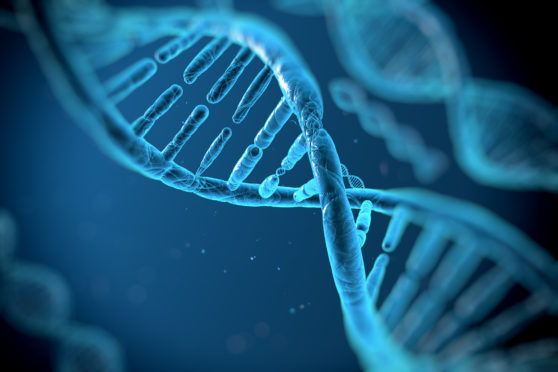
More than 30,000 DNA samples taken from Scots under the age of 18 are being held on police databases.
New figures from the Home Office show this includes 1,670 samples taken from children aged 8 to 15.
Overall, around 360,000 samples from Scotland are being held on the National DNA Database – meaning samples from under-18s make up nearly one in 10 of the total.
The figures have prompted renewed calls for introduction of tighter regulations for the use of biometric data – which includes DNA, fingerprints and facial recognition.
An independent Biometrics Commissioner has been overseeing the work of police in England and Wales since 2013.
But no such role exists yet in Scotland – despite calls for one to be created.
Liam McArthur, Scottish Liberal Democrat justice spokesman, said: “Biometric data is very powerful and a precious personal commodity.
“The police must be extremely careful that its use is always justified and data is robustly managed.”
He said that over the past four years two expert groups had carried out work for the Scottish Government to examine how biometric legislation was working in Scotland.
“Both recommended a new code of practice and the creation of an independent biometrics commissioner. Ministers now need to get on with it,” he added.
Privacy campaigner Matthew Rice, Scotland director of the Open Rights Group, said there was a “dire need” for oversight of use of biometric material.
“Independent reports have called for a review of the policy of collecting biometrics from children, in particular considering whether it is truly necessary to collect this information,” he said.
“There must be clear standards for removing individuals from these databases, overseen by an independent body.”
Children aged over eight can be arrested if they are suspected of committing a crime – with a DNA sample taken from a swab.
The resulting profile is stored on the Scottish DNA database and sent to the National Database in Birmingham.
If a child is referred to a Children’s Hearing for certain sexual and violent offences and the offence is upheld, the samples can be kept for up to three years.
Otherwise, the records must be destroyed.
DNA samples from adults who are not convicted of a crime are normally destroyed but, in certain circumstances, can be kept – such as accepting a fine as an alternative to prison.
At the end of last year, there were 29,174 DNA samples from Scots 16 and 17-year-olds on the police database.
Judith Robertson, chair of the Scottish Human Rights Commission, said the retention and use of biometric information had important implications for privacy and other human rights, such as the right to a fair trial and the presumption of innocence.
She added: “The deletion of records for people not convicted of a criminal offence should be a priority.
“In all circumstances the retention and storage of data engages the right to privacy and the law and policy around it must be tightly governed and kept under sustained review.”
The Scottish Government said stricter rules on using DNA samples from children under 12 would be introduced with legislation currently going through Holyrood to raise the age of criminal responsibility from eight to 12.
A spokesman added legislation was being brought forward that would establish a biometrics commissioner in Scotland.

Enjoy the convenience of having The Sunday Post delivered as a digital ePaper straight to your smartphone, tablet or computer.
Subscribe for only £5.49 a month and enjoy all the benefits of the printed paper as a digital replica.
Subscribe